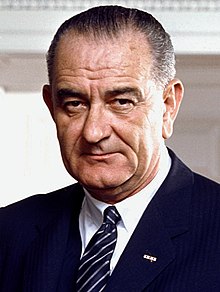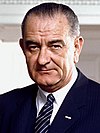Community Action Agencies
In the United States and its territories, Community Action Agencies (CAA) are local private and public non-profit organizations that carry out the Community Action Program (CAP), which was founded by the 1964 Economic Opportunity Act to fight poverty by empowering the poor as part of the War on Poverty.
CAAs are intended to promote self-sufficiency, and they depend heavily on volunteer work, especially from the low-income community. The Community Services Block Grant (CSBG) is the agencies' core federal funding. Agencies also operate a variety of grants that come from federal, state and local sources. These grants vary widely among agencies, although most CAAs operate Head Start programs, which focus on early child development. Other programs frequently administered by Community Action Agencies include Low-Income Home Energy Assistance (LIHEAP) utility grants and Weatherization Assistance Program (WAP) funded through the U.S. Department of Energy (DOE).
Each CAA is governed by a board of directors consisting of at least one-third low-income community members, one-third public officials, and up to one-third private sector leaders. This board structure is defined by federal statute and is known as a tripartite board.[1]
There are currently over 1,000 CAAs, engaged in a broad range of activities; typical activities include promoting citizen participation, providing utility bill assistance and home weatherization for low-income individuals, administration of Head Start pre-school programs, job training, operating food pantries, and coordinating community initiatives.[2][3]
History
[edit]In 1964, the U.S. poverty rate (income-based) included 19 percent of Americans. Rising political forces demanded change. Under a new White House Office of Economic Opportunity (OEO), the concept of the federally-funded, local Community Action Program (CAP)—delivered by a local Community Action Agency (CAA), in a nationwide Community Action Network—would become the primary vehicle for a new, federal War on Poverty.[4][5][6]
Establishment
[edit]
Lyndon B. Johnson's landmark Economic Opportunity Act of 1964—drafted by former Peace Corps founding director Sargent Shriver—established Community Action Programs in Title II. In concept, a Community Action Program was defined as a program "...which provides services, assistance, and other activities of sufficient scope and size to give promise of progress toward elimination of poverty or a cause or causes of poverty through developing employment opportunities, improving human performance, motivation, and productivity, or bettering the conditions under which people live, learn, and work."[4][5][6][7][8]
A controversial feature of the Act was the requirement for "maximum feasible participation" of the people directly affected (the poor, basically) in the decision-making about how federal funds would be spent on them, in their community. This flew in the face of long-established power structures, where elected city councils, county commissions, state and federal officials ruled over everything—mostly people from the power elite and upper-class communities. The notion that the poor (largely minorities) should have a say in their affairs created some opposition at first, but was in keeping with America's civil rights and reform movements, and War on Poverty, in the 1960s and 1970s, and generally accepted, at least at first.[5][6][8][9]
In each community, the local Community Action Program (CAP) was provided by a local non-profit Community Action Agency (CAA), overseen by a board made up—initially—of residents of the target neighborhood or population being served. This gave poor, working class and minority citizens a voice in how they would be served by federal funds aimed at improving their lives. However, this caused some anger and frustration among the nation's power establishment, especially in local governments used to running their communities, and among the power elites (particularly in the business community) used to dominating their local governments.[5][6][8][9][10]
Problems, pushback, pullback, and successes
[edit]
Although Johnson and other architects of the legislation expected Community Action Programs and Agencies to be an effective weapon in his War on Poverty, many of them were riddled with problems. In more extreme instances, local political regimes were threatened by the empowerment of poor political activists with funding and resources from the federal government.[11]
One of the most dramatic episodes resulting from these clashes between CAA leaders and local governments occurred when, following cuts in funding for a summer youth CAP, black activist Charles Sizemore and thirty others barged into San Francisco Mayor John Shelley's office demanding resources and threatening that if the CAP was not funded once again, "this goddamn town's gonna blow.[12]"
By the mid/late-1960s, many political leaders—including President Johnson, U.S. Senator Richard Russell (D-GA) (leader of the anti-civil rights conservative coalition), and Chicago's powerful Mayor Richard J. Daley—publicly or privately expressed displeasure with the power-sharing that the CAA brought to poor and minority neighborhoods.[10][13]
In 1967, conservative and establishment pressures brought two amendments to the Congressional funding bill for the OEO (Office of Economic Opportunity—overseer of the CAA/CAP programs):
- The Green Amendment gave city governments the right to decide which entity would be the official CAA for their community.
- The Quie Amendment gave two-thirds of the seats on CAA boards to elected city officials and "private sector representatives" (businesspeople), effectively outnumbering neighborhood citizens on their own CAA boards.
The net result was a halt to the citizen participation reform movement and a fundamental shift of power away from the nation's poor and minorities.[5][6][8][9]
Nevertheless, some federal emphasis on anti-poverty programs remained, including the (modified) CAP/CAA system. By 1973, the U.S. poverty rate dropped to 11.1 percent, a 7.9 percent decrease in 10 years, and the lowest it would be between 1959 and 2004.[4] One of the ways in which the CAAs were clearly effective in combatting poverty––and unexpectedly so––was by increasing the public's awareness of already existing welfare programs, such as Aid to Families with Dependent Children.[14] Indeed, between 1960 and 1973, and especially in the years following the passage of the Economic Opportunity Act of 1964, spending on the AFDC quadrupled as the number of individuals who enrolled in the program rose sharply.[15]
Conservative backlash & Relf v. Weinberger
[edit]During the conservative-backlash era of the late 1970s, 1980s and 1990s as the federal government (under Presidents Jimmy Carter, Ronald Reagan, George H. W. Bush, Bill Clinton, and George W. Bush) cut away programs for the poor and minorities, the CAPs and CAAs were defunded, underfunded, or warped into a strange variation of their original intent, with far less influence of the poor and minorities in how they would be served by these entities.[4][5][6][8][9]
Nixon officials presided over CAP and CAA groups during the Relf v. Weinberger case which saw a pair of young black girls from Montgomery, Alabama surgically sterilized without their consent.[16] The Relf case's revealed administrative attitudes of the era which suggest that forced sterilization was an acceptable tactic in Republican management of federal welfare.
The troubled economy of the mid-to-late 1970s, brought on by the energy crisis and the Early 1980s recession was especially hard on America’s poor. Between 1973 and 1983, the national poverty rate rose from 11.1% to 15.2%. Another decade later, in 1993, the poverty rate was virtually unchanged at 15.1%, just a 0.1% decrease from 1983.[4]
Between 1993 and 2004, the U.S. poverty rate first declined (from 15.1% in 1993, to 11.3% in 2000), but then increased to 12.7% by 2004. The 2008 poverty rate was 13.2%.[4]
Today
[edit]This section needs expansion. You can help by adding to it. (June 2020) |
However, despite these challenges, around 1,000 CAPs (and their CAAs) still operate today, across the United States.[3] [6]
See also
[edit]Footnotes
[edit]- ^ "Archived copy". Archived from the original on 2011-02-03. Retrieved 2011-02-11.
{{cite web}}: CS1 maint: archived copy as title (link) U.S. Code Title 42 Chapter 9910 - ^ "Community Action Partnership: About CAAS". Retrieved July 12, 2010.
- ^ a b Community Action Partnership website
- ^ a b c d e f Bell, Mike, Office Assistant, Community Action, Inc., "History of Community Action Agencies," Archived 2016-07-01 at the Wayback Machine circa 2010 (on website of Northeast Kansas Community Action Program Inc., Hiawatha, Kansas)
- ^ a b c d e f A Brief History of Community Action Archived 2016-03-28 at the Wayback Machine, (slideshow), circa 2013, presented by Jovita A. Tolbert, Nat'l Assn. for State Community Services Programs (NASCSP)
- ^ a b c d e f g "History of Community Action," summary of the concept and history of the nation's federal Community Action programs, published on the website of the Illinois Association of Community Action Agencies - IACAA.
- ^ The Economic Opportunity Act of 1964, August 1964
- ^ a b c d e "Public Deliberation in an Age of Direct Citizen Participation," academic essay by Nancy Roberts, professor of strategic management, Graduate School of Business and Public Policy, Naval Postgraduate School, as extracted from her article "Age of Direct Citizen Participation," in Amer. Review of Public Admin., Vol. 34 No. 4, December 2004, pp.315-353, Sage Publications (posted on Univ. of Minn. website).
- ^ a b c d Examination of "widespead [sic] citizen participation" in the Model Cities Program and the demands of ethnic minorities for a greater decision making role in American cities, Model Cities 152A, by Ricardo A. Millett, 1977, published by R&E Research Associates, San Francisco; full text (scanned) at Archive.org .)
- ^ a b "Mayor Daley on the Community Action Program," Archived 2016-06-06 at the Wayback Machine audio recording Dec 24, 1965: conversation excerpt (President Johnson and Chicago Mayor Richard J. Daley discuss Daley's strong objection to the poor controlling community action programs serving their communities), Conversation Number: WH6512.04-9329, The Miller Center
- ^ G. Calvin Mackenzie and Robert Weisbrot. The Liberal Hour: Washington and the Politics of Change in the 1960s.
- ^ Klaus P. Fischer. America in White, Black, and Gray: the Stormy 1960s.
- ^ "LBJ and Senator Richard Russell on the Community Action Program Archived 2016-06-06 at the Wayback Machine," audio recording Jun 02, 1966: conversation excerpt (President Johnson and Georgia Sen. Richard Russell express dislike and distrust of Community Action Program), Conversation Number: WH6606.01 #10205, The Miller Center
- ^ Dallek, Robert (1998). Flawed Giant: Lyndon Johnson and His Times, 1961-1973. Oxford: Oxford University Press. p. 334.
- ^ Dallek, Robert (1998). Flawed Giant: Lyndon Johnson and His Times, 1961-1973. Oxford: Oxford University Press. p. 334.
- ^ https://www.splcenter.org/sites/default/files/d6_legacy_files/Relf_Original_Complaint.pdf [bare URL PDF]
Further reading
[edit]- Kazuyo Tsuchina, Reinventing Citizenship: Black Los Angeles, Korean Kawasaki, and Community Participation. Minneapolis, MN: University of Minnesota Press, 2014.
External links
[edit]- Community Action Partnership - The National Association, Washington, D.C.
- Records of the Community Services Administration, National Archives of the United States
- CAPLaw - Community Action Program Legal Services, Boston, Massachusetts
Regional CAA Assn's.
[edit]- Illinois Association of Community Action Agencies(IACAA), Illiniois
- Indiana Community Action Association (INCAA), Indianapolis, Indiana
- Community Action Partnership of Orange County - The Orange County, California chapter of Community Action Partnership
- Minnesota Community Action Partnership (MinnCAP)
- Missouri Community Action Network (Missouri CAN) - Missouri's statewide association of Community Action
- Community Action Partnership of New Jersey - New Jersey's statewide association of Community Action
- New York State Community Action Association
- Vermont Community Action Partnership


